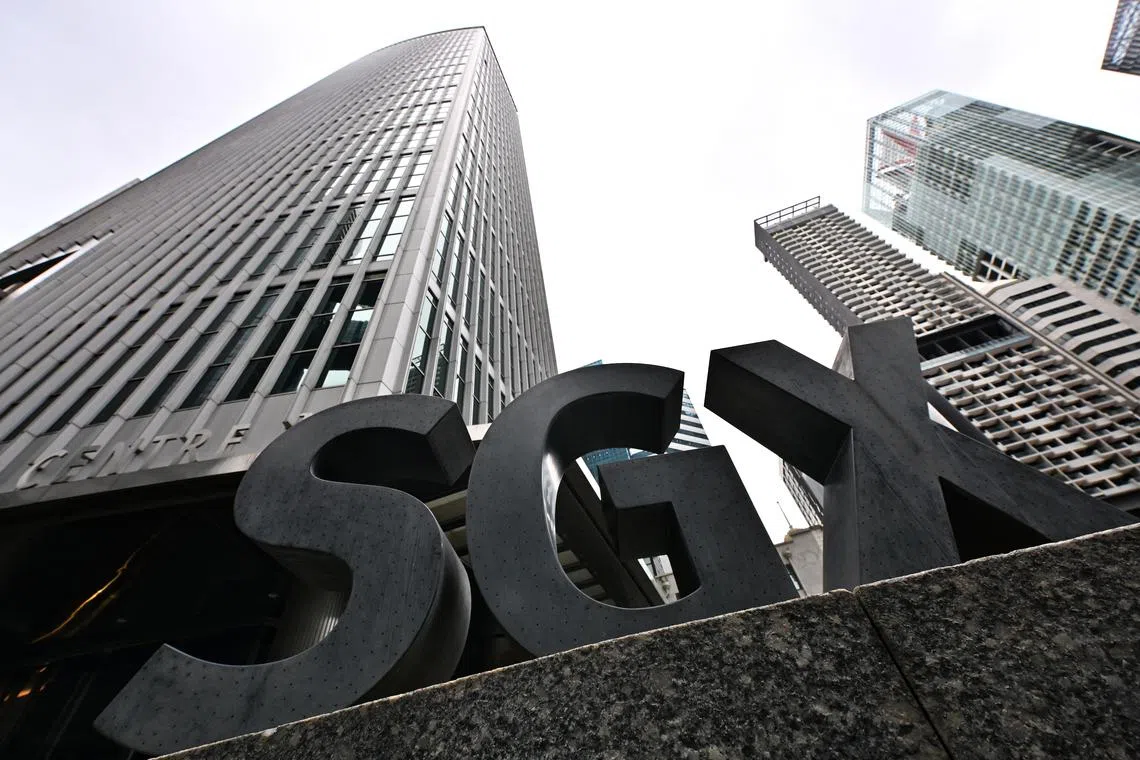Singapore stocks snap 2024 losing streak as STI gains 0.3%
Sign up now: Get ST's newsletters delivered to your inbox

Across the broader market, losers outnumber gainers 288 to 250, after 1.2 billion securities worth $836.3 million are traded.
ST PHOTO: LIM YAOHUI
Raphael Lim
Follow topic:
SINGAPORE - After being on a losing streak since the start of 2024, local stocks regained some bounce on Jan 5 amid mixed trading in the region.
The benchmark Straits Times Index (STI) rose 0.3 per cent, or 10.29 points, to 3,184.3, closing higher for the first time in 2024, after three days of declines. But the STI was still down 1.7 per cent for the week, ending a four-week winning streak.
Across the broader market, losers outnumbered gainers 288 to 250, after 1.2 billion securities worth $836.3 million were traded.
Shares of Yangzijiang Shipbuilding led the index gainers, rising 2.7 per cent to close at $1.55. Other top performers include Venture Corp, which gained 1.2 per cent, and Sembcorp Industries, which rose 1.1 per cent.
The local banks also made gains. OCBC Bank, DBS Bank and UOB rose between 0.5 per cent and 0.9 per cent.
Singtel was the most active counter by value, with some 44.5 million shares worth $104.9 million changing hands. It fell 1.3 per cent to close at $2.35, ending at the bottom of the STI performance table.
Elsewhere in the region, key indexes in Hong Kong, Shanghai, South Korea and Australia ended in the red. However, the Nikkei 225 in Japan and the KLCI in Malaysia closed higher, rising 0.3 per cent and 0.7 per cent respectively.
This followed a mixed performance on Wall Street on Jan 4, where the Dow Jones Industrial Average was flat, but the S&P 500 and Nasdaq Composite both ended lower.
SPI Asset Management managing partner Stephen Innes said that Wall Street traders trying to decipher the market’s medium- to long-term direction based on early trends find their task complicated by significant macroeconomic uncertainty.
“Attention is drawn to fluctuating oil prices amid the ongoing Middle East conflict, and an unfortunate natural disaster in Japan
“Additionally, concerns persist about Mainland China’s consumption engine and the potential impact of past policy errors on consumer psychology, further complicating predictions in Chinese stock markets.”
He also said that the US jobs report for December – which is scheduled to be released later on Jan 5 – holds the potential to influence market sentiment.
A too-strong report could be a setback for stocks, aligning with expectations of rate cuts in the second half of 2024, he said. “Conversely, if the report aligns with or falls slightly short of expectations, it may reinforce beliefs in an imminent rate cut, potentially sparking a rally.” THE BUSINESS TIMES

